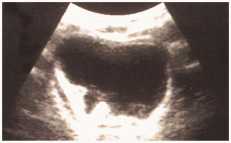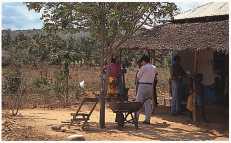
|
|
The research activities are concentrated on filariasis and schistosomiasis
which constitute the major public health problems in the tropics.
Filariasis
Brugia malayi(Cheju strain, periodic form), B. pahangi and the vector mosquito,
Aedes aegypti (Liverpool strain)have been maintained in the laboratory for
many years. Highlights of recent studies are as follows.
1)Mode of action of diethylcarbamazine (DEC) :
Recently we reported that DEC is a competitive inhibitor of acetylcholinesterase
of filarial worms, DEC inhibits cell proliferation, disrupts the microtubules
of LLC‐MK2 cells, inhibits polymerization of microtubules and disrupts the
pre‐formed microtubles in vitro.
2)Development of a simple and sensitive method for determination of serum
concentration of ivermectin (IVM)and DEC:
IVM and DEC modified partially in their chemical structure successfully
produced the antibody against drugs. Therefore the serum concentration (5
ng/ml)of IVM and DEC can be determined by EIA.
3)Combination of DEC and IVM for the treatment of filariasis:
Several lines of evidence indicate that DEC and IVM interact additively
or synergistically against microfilariae and adult worms of B. pahangi in
vivo and in vitro.
4)Screening of antifilarial drugs from medical plants:
Vernonia amygdalina from Africa, Neurolaena lobata from Guatemala and Cardiospermun
halicacabum from Thailand were effective in vitro on B. pahangi adult worms
and microfilariae.
5)Epidemiology and control of bancroftian filariasis:
A research project was carried in Kwale, Kenya, in cooperation with Kenya
Medical Research Institute(KEMRI)during the period of 1990 and 1996.Transmission
potential and morbidity were studied. Mass‐chemotherapy with combination of
DEC and NaHCO3 was evalualed.
Schistosimoasis
Schistosoma mansoni(Puerto Rican strain and Kenyan strain), S. haematobium
(Kenyan strain)and some strain of vector snails have been maintained in the
laboratory. Highlights of recent studies are as follows.
1)Swimming behavior of miracidia:
cAMP is involved in the control of ciliary beating and chemotaxis of miracidia.
2)Mechanisms of penetration of cercariae into skin:
The studies suggest the involvement of protein kinase C in proteolytic enzyme
release from cercariae.
3)Epidemiology and control of S. haematobium infection:
Since 1981, the research project on Schistosomiasis haematobia was carried
out in Kwale, Kenya, in cooperation with KEMRI for 15 years. The highlights
of our studies are human water contact study, cercarial concentration in natural
water, ecology of Bulinus globosus, usefulness of urinary reagent strips,
new immunodiagnostic test(urine ELISA, modified COPT), effect of piped water
supply, KAP study(knowledge, attitute and practices), health education, morbidity
studies using ultrasound and environmental modification for snail control.
Recently high prevalence of bladder cancer and liver fibrosis is reported
in the community.
| Professor | Yoshiki Aoki |
| Assistant Professor | Yasunori Fujimaki |
| Research Associate | Kanji Watanabe |
| Technologist | Mitsumasa Miura |
| Technician | Nami Fujii |
| Postgraduate Student | Tomoharu Ohki |
| Postgraduate Student | Hidehiko Yamauchi |
| Postgraduate Student | Hiroshi Matsuyama |
| Postgraduate Student | Gunawardena Nipul Kithsiri |
| Postgraduate Student | Teruyo Kusaba |

Ultrasonography of the bladder of the patient infected with S. haematobium

Medical plant used by traditional healer in Kenya